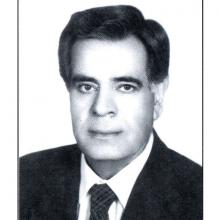Mr. Ali agah was aware of the managers and pioneers who began his managerial career in 1349 and took on a responsibility that was based on his profound scientific knowledge. Kerman Cement Factory was commissioned by Haj Abolghasem Harandi, Head of Kerman Chamber of Commerce and Merchants Brothers, Hamadan Brothers and Iran Industrial and Mineral Development Bank with a capital of 160 million Rials in 1346, and its first unit with a capacity of 300 tons / day was registered in 1349. The operation has arrived. At the same time, Mr. Bakhshar, who was in charge of the management, resigned because of the overwhelming employment. Mr. Ali Agah was thus selected as the most appropriate person for this position, namely, the management of the plant. Through his diligence and perseverance and good track record, he managed to gain a shareholder confidence and pay a reasonable dividend to his shareholders while raising the percentage of shareholders to raise capital while doing so. The bankruptcy of the Sun factory frustrated the people of Kerman and refused to invest in the industry. His efforts to accelerate the implementation of the 1,000 ton and 2,300 ton unit development plans led the Industrial Development Bank to agree to pay prepayments before final approval of the loan. Further financial need and bank loan restriction With the agreement of the lender bank, another company was established as the new Kerman Cement Company and the development operations continued at the same pace as the new loans. The company was able to pay part of its loan by closing the 1000 ton factory in February 1973 and the 2300 ton in February 1976 and consolidate the new company into the old merging company and Kerman Cement Company. This also led to regular payouts to shareholders and an increase in stock prices. The adoption of efficient and constructive approaches to the management of Kerman cement resulted in increased salaries and benefits and improved working conditions, which attracted skilled and experienced technicians from all over the country. These well-thought-out decisions and actions involving employees included building a home within the factory and providing cars and salaries. Highlighting these orientations was the participation of the workers in the purchase of shares and the profitability of their earnings, which led to the awarding of the time and tone management to several of the workers in the coat of arms. Other works include the establishment of the first modern poultry farm in Iran. (Simorgh Co. operated in Kerman, Yazd, Khorasan, and Qazvin provinces.) Ali Agah followed the construction of modern pistachio farms in the Boyin Zahra area, which is commendable in its kind. Mr. Ali Agah's influential and responsible service will not be forgotten, and greats such as his dear Iranian pride have always been the focus of their rich lives.









دیدگاهها